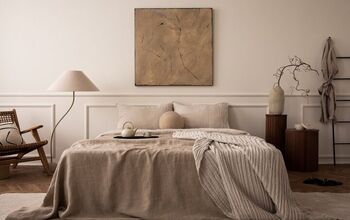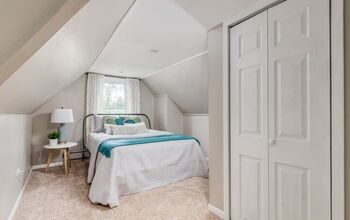How To Create A Cozy, Inviting Living Room

When people talk about the heart of the home, the living room is right up there with the kitchen. It’s where you snuggle up for a movie, entertain guests, hold family meetings, or perhaps take a catnap during an afternoon thunderstorm. Therefore, you want your living room to be cozy, inviting, comfortable, and ready for anything, like an unexpected visitor or last-minute game night.
The perfect living room uses furniture, rugs, and decor to create a functional layout that encourages conversation. A cozy color palette, layered lighting, and furniture that prioritizes comfort keep the space inviting. Add personal touches and mix and match textures with various accessories and decor, but don’t go overboard so you avoid clutter. Instead, rotate pieces based on the season.
Ultimately, the main focus for your living room should be a place that’s primed for relaxing and socializing. Keep reading to learn how to create a living room that’s welcoming and warm.
Start With A Warm, Functional Layout For Your Living Room
The living room typically sees a lot of activity since it’s the main space where people relax and visit with each other. Plenty of things happen in this room, like television binge sessions, game nights, book club meetings, or mingling before a dinner party.
Since the living room hosts such a wide variety of happenings, it’s essential to create a layout that meets the challenge. Keep walkways clear, so your living room doesn’t feel cramped or cause traffic jams.
Think about flow when you’re placing furniture, and position pieces to help define zones. Rugs are also a great way to set up different areas if you’re working in a larger living room.
Consider how you use the space when planning seating and choose pieces that make sense. For example, if you need to go from watching a movie to discussing your latest novel, use movable chairs, ottomans, or benches to create different seating layouts in a pinch.
A Cozy Color Palette Makes A Living Room Feel Welcoming
Give your living room an inviting, warm ambiance using earthy hues, soft pastels, or warm neutrals. Colors affect your mood, and these warmer, subdued tones often encourage feelings of relaxation and help people feel at ease.
Your guests will feel right at home sitting back on the sofa with a cup of tea as you catch up on life. People don’t feel a need to rush out the door because they feel welcomed and comfortable. Most importantly, you’ll come home every day to a space that embraces you and makes you feel at peace.
Mix and match a few colors to add interest, or for ultimate calm, go with a monochromatic color scheme that incorporates various shades of the same color. If you’re unsure how to approach choosing colors for your home, a color wheel is an invaluable tool.
Layer Lighting To Set The Right Mood
If you’re counting on that generic boob light (you know the one) that the builder put on the ceiling, you’re missing out. Lighting is a powerful force in every space, and it shouldn’t be left to chance.
It’s essential to be intentional when choosing the lighting in your living room. Assess how natural light enters the room and maximize it with airy window treatments, mirrors, and furniture placement that doesn’t block windows.
But artificial lighting is also a major player, and you should use various sources. A mix of ambient, task, and accent lighting is key — think overhead lighting, floor lamps, wall sconces, LED strips, and table lamps. Even things like candles, wax warmers, or a fireplace help create a cozy glow.
To enhance a welcoming vibe, choose warmer color temperatures and use dimmers. Today, smart technology makes it easier than ever to create the right mood, since you can change the color and intensity of your light bulbs with your smartphone.
Make Comfort A Priority When Selecting Furniture
Function is important, but don’t ignore comfort when you’re designing and decorating your living room. Look for comfortable furniture that provides good support and soft, welcoming fabrics. Cotton, velvet, and linen are a few examples of popular upholstery fabrics that deliver big cozy points.
You can also ramp up the comfort factor by choosing plush pillows, cushions, and throws that help increase softness and add extra texture. These cushy accessories are also a great way to soften harder furniture items that you already own, so you don’t have to go buy brand-new pieces. For example, if you have a beautiful rattan wingback chair, plump cotton cushions add instant softness.
Use Different Textures And Accessories To Add Depth To Your Design
Natural materials are one of the easiest ways to create a warm, comfortable atmosphere — think materials like wood, rattan, wicker, leather, and cotton. However, this doesn’t mean you need to use all rattan furniture or everything has to be wood. Instead, a mix makes things much more interesting, and incorporating a few manufactured materials is fine, too.
However, it’s also important to use a blend of textures, finishes, patterns, and more to help add visual interest and depth to your design. Mixing shapes and edges also helps keep things intriguing.
When considering mixing materials and styles, if you’re stuck, simplify things by thinking in terms of opposites. Here are a few classic examples.
| Matte vs. Gloss |
| Rough vs. Smooth |
| Curved vs. Straight |
| Solid vs. Print |
| Natural vs. Manmade |
| Dark vs. Light |
| Plush vs. Firm |
| Silky vs. Nappy |
You can introduce varied textures through window treatments, rugs, and accessories. Layer textural accessories like baskets, books, and pillows to encourage people to come into the room and interact with pieces.
Sprinkle In Personal And Seasonal Touches
Real estate agents are always quick to tell home sellers to remove all traces of personal items from their homes. But don’t apply this advice to your house when you’re living it. It’s your house, after all, so bring in personal pieces that show off your sense of style and your unique story.
Other accessories that add warmth and homey touches are greenery, fresh flowers, and bespoke pieces. If you love to decorate for the seasons, rotate decor throughout the year, and don’t be afraid to swap out larger items. For example, you could replace heavier winter drapes with breezy sheers in the spring and summer.
When dealing with seasonal items, replace your everyday decor instead of adding things on top. You don’t want the space to become overfilled and confusing, which brings us to our final tip.
Don’t Collect Clutter
Nothing says stay away more than a room overflowing with a hodge-podge of items and too much stuff. You have nowhere to sit, no clear walkways, and you feel overwhelmed by piles of things.
Clutter attracts more clutter, and it’s more likely to repel people than invite them in. So don’t fall for the whole cluttered kitsch — cozy doesn’t mean cluttered. This doesn’t mean you can’t show off your favorite things, but keep it intentional.
Choose savvy storage solutions that hide the things you want to keep out of sight. Ottomans, benches, baskets, and tall cabinets are a few closed-storage options (many of which offer extra seating). Keep clutter in check by taking a couple of minutes to put things away each night. Also, routinely go through your belongings to purge what you don’t need or want.
Create A Living Room That Makes You Feel Right At Home
The right lighting, a cozy color palette, and comfy furniture arranged in a functional layout are the perfect beginnings for a welcoming living room. It’s all about making a space that feels warm and inviting, so you and your guests feel at home.
A well-designed living room encourages relaxation and socialization, but maintains a casual and appealing ambiance. By all means, incorporate personal touches, but don’t create clutter. Remember, your living room should make your house a place you can’t wait to come home to.
Related Guides:
- Are You Making These Living Room Design Mistakes?
- Can You Put A Daybed In The Living Room?
- Does Your Living Room Need To Have A Coffee Table?

Stacy Randall is a wife, mother, and freelance writer from NOLA that has always had a love for DIY projects, home organization, and making spaces beautiful. Together with her husband, she has been spending the last several years lovingly renovating her grandparent's former home, making it their own and learning a lot about life along the way.
More by Stacy Randall













![The 10 Best Table Saws - [2022 Reviews & Buyer's Guide]](https://cdn-fastly.upgradedhome.com/media/2023/07/31/9070645/the-10-best-table-saws-2022-reviews-buyer-s-guide.jpg?size=350x220)













